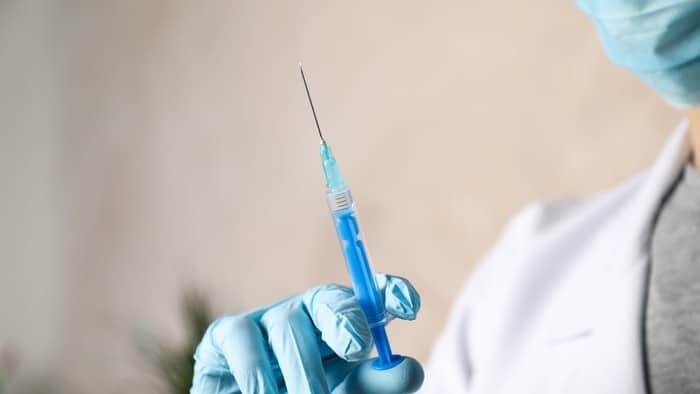This article was originally published on Fool.com. All figures quoted in US dollars unless otherwise stated.
Johnson & Johnson (NYSE: JNJ) has what many Americans want: a one-dose COVID-19 vaccine. I know people who waited on vaccination specifically to get the J&J jab. The U.S. Food and Drug Administration (FDA) granted the company Emergency Use Authorization in late February. That's two months after the authorization of two-dose vaccines from Pfizer and Moderna. And last month the U.S. ordered an additional 100 million J&J doses. It ordered an initial 100 million doses last year.
The momentum slammed to a halt this week, though. The FDA and the Centers for Disease Control and Prevention (CDC) recommended a pause in the administration of the J&J vaccine after the occurrence of "rare and severe" blood clots in some people. Now investors may be wondering what this means for J&J's future in the vaccine space -- and its share price. Here's what you need to know.
A rare occurence
First, we should put the situation into perspective. J&J has vaccinated more than 6.8 million people in the U.S. so far. Six cases of blood clots have been reported. So this remains an exceptionally rare occurrence. The FDA says it recommends the halt "out of an abundance of caution."
The CDC is meeting with an immunization practices advisory committee on Wednesday to examine the cases. And the FDA is also investigating. The agencies recommend the vaccination halt until their review is complete.
The people who experienced the blood clots were women between the ages of 18 and 48. Symptoms appeared six to 13 days after vaccination. The blood clots -- cerebral venous sinus thrombosis -- are of a type usually treated with the anticoagulant drug heparin. But health officials say that in these cases heparin could be dangerous -- and that means a different treatment must be used.
It's impossible to predict the review's outcome. But we can use the clues we have to imagine potential scenarios.
Considering there is a pattern so far -- women in a certain age group -- the agencies may allow vaccination to resume in those who aren't in this group. It's also possible the agencies will learn why the clotting events occurred and how to prevent them in the future. In that case, vaccination might resume in everyone age 18 and older.
It's also possible experts won't learn exactly why these events occurred. But due to their rarity, the agencies may allow vaccinations in all groups to resume -- as long as healthcare providers have a blood clot treatment plan in place.
"Recognition and management"
The FDA emphasized the idea of awareness among practitioners. The agency said the vaccination pause is important "to ensure that the healthcare provider community is aware of the potential for these adverse events and can plan for proper recognition and management."
So I'm optimistic this is about developing the best plan of use for the J&J vaccine -- not about taking it off the market.
Now, investors may be wondering what this pause means for J&J earnings. The answer is: nothing. J&J has pledged to sell its vaccine without taking a profit during the pandemic. This means any dip in vaccine use or sales won't hurt earnings.
J&J may raise the price of its vaccine after the pandemic is over -- in which case gains or declines in sales will add to or reduce profit. But even at that point, J&J investors shouldn't expect a huge impact. The company's vast array of products means it doesn't rely on just one for revenue or sales growth. For instance, J&J's full-year 2020 revenue totaled more than $82 billion. And the company's products span the categories of consumer health, pharmaceuticals, and medical devices.
How about share price? The shares may dip in the short term on this pause in vaccination. But I don't expect any declines to last for very long. Pharmaceutical stocks haven't been as sensitive to vaccine news as biotech stocks. Again, that's because they don't depend on just one product. So J&J shares remain a solid healthcare investment for the long term.
This article was originally published on Fool.com. All figures quoted in US dollars unless otherwise stated.









